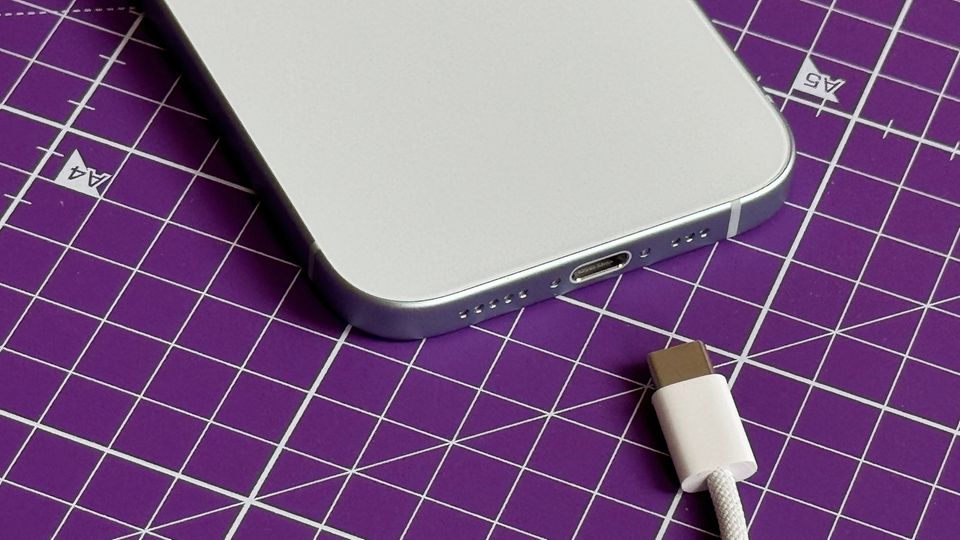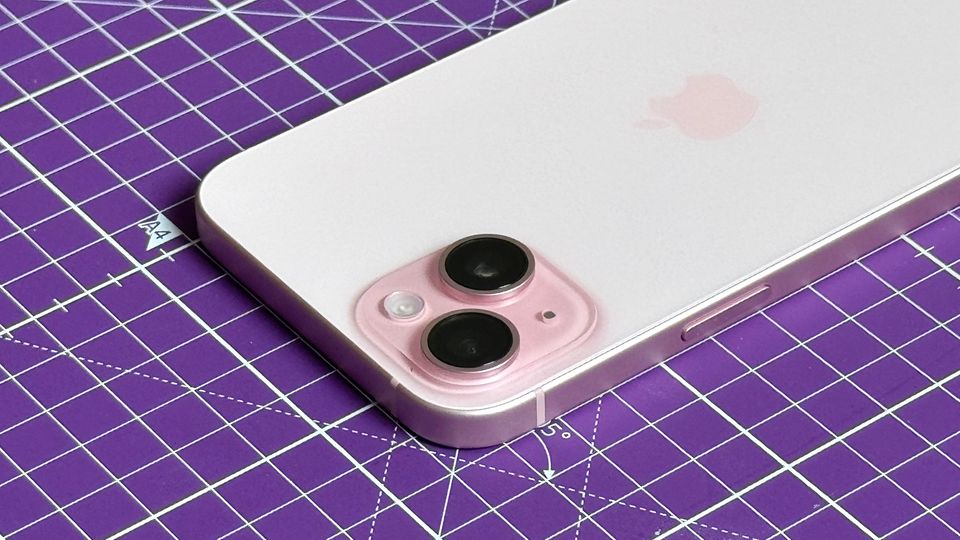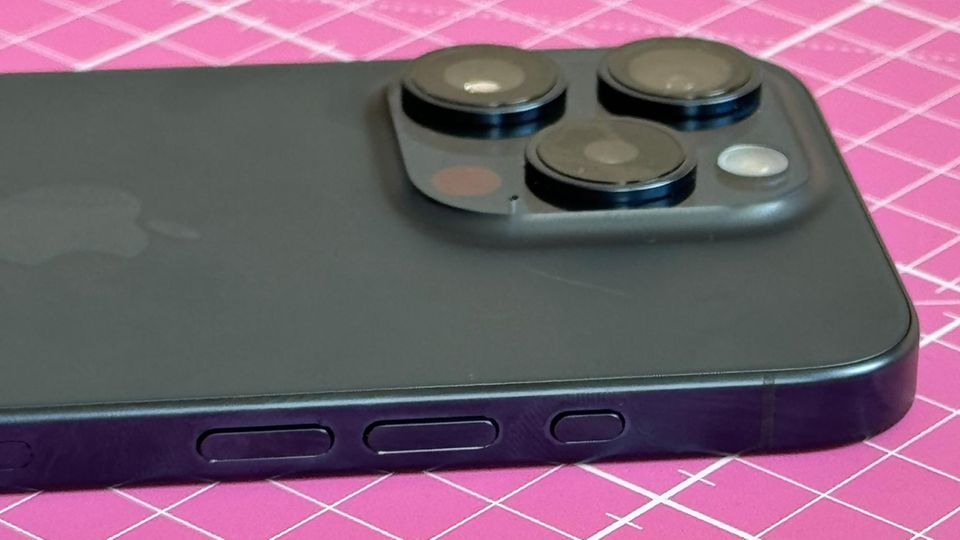After the disappointing iPhone 14, Apple is stepping up its game this year. And even lowers prices. We tested iPhone 15 and 15 Plus.
Anyone who wanted to buy a new iPhone last year had a difficult choice. The iPhone 14 not only brought hardly any innovations, but was even more expensive. The iPhone 13 Pro was therefore often the better choice. The test of the iPhone 15 and iPhone 15 Plus shows that Apple compensates for both shortcomings. And goes one better.
At first glance, the iPhone 15 and iPhone 15 Plus hardly differ from each other. Only the size varies: The iPhone 15 has a 6.1-inch display, while the iPhone 15 Plus has a 6.7-inch display. Thanks to the larger housing, Apple was also able to accommodate a slightly larger battery in the Plus model. Otherwise both devices are the same – from the chic new look with colorfully colored glass back to the technology, both offer identical upgrades. And they are impressive this year.
Dynamic beginner
When it comes to design, Apple is already closing the gap to the Pro models – at least in two important points. Last year only the premium models got the chic Dynamic Island, but now it also ends up in the standard iPhones. The little black pill in the OLED display also unfolds wonderfully smoothly on the iPhone 15 and iPhone 15 Plus, shows additional information and offers a shortcut for music control or calls. With up to 2000 nits, the display has also become visibly brighter, making it much easier to read in bright daylight.
The basic models lose some of their advantage when it comes to weight: Due to their aluminum frames, entry-level iPhones have weighed a little less than the heavy Pros for years. Because the iPhone 15 Pro and iPhone 15 Pro Max (you can find our detailed test here) now use titanium instead of stainless steel, both have become a lot lighter. Nevertheless, the iPhone 15 and iPhone 15 Plus still feel noticeably lighter in comparison, which is particularly pleasant given the large display of the iPhone 15 Plus.

All iPhone 15s come with USB-C – and a stylish braided cable
© Malte Mansholt / stern
USB-C in the iPhone 15: Finally standard
Probably the most important innovation can be found in all new iPhones: In addition to the iPhone 15 Pro and iPhone 15 Pro Max, the cheaper models also finally have a USB-C port. This has immediately noticeable consequences in everyday life. Instead of always needing Apple’s Lightning cable to charge the iPhone, you can now use any plug Take Android smartphones, notebooks or tablets. The cable chaos should decrease significantly in the long term.
But the advantages go even further. Apple implements the USB standard without restrictions. Hard drives can now also be integrated via the connection, and the iPhone can be connected directly to a television or monitor with the appropriate cable and then mirrors the image. So you can simply put Netflix on the hotel TV while on vacation or watch children’s videos on the TV at home. The iPhone even brings games to the big screen.
However, the iPhone 15 and iPhone 15 Plus have one limitation compared to the Pro models: their USB-C port only supports USB 2.0, which means that data is only transferred at the same comparatively slow speed as the old Lightning cable was. Apple reserves the faster data transfer of the modern USB 3 standard for the premium models. For most users, however, this shouldn’t be a big problem. If you are absolutely dependent on fast data transfer, you should consider an iPhone Pro if in doubt.

The camera is one of the highlights of the new iPhone 15. You can see it clearly here: The stylish glass back also allows the camera to stand out transparently from the housing
© Malte Mansholt / stern
iPhone 15 in the test: The camera is that good
But the revised portrait mode is even more exciting. If the camera detects people or animals, it automatically saves the depth differences in the image. This allows you to subsequently change the depth of field in editing mode. The effect is simply impressive. Even with quick snapshots, you can achieve an effect that comes close to a full-fledged camera lens. This is particularly surprising with the basic iPhones: Unlike the Pro models, they cannot rely on the Lidar depth sensor. Instead, the iPhone 15 and iPhone 15 Plus calculate the depth data by combining the information from both lenses.
And even in poor lighting conditions, the iPhone 15 can clearly outperform its predecessors. Even compared to the iPhone 14 Pro, it brings out a little more detail in dark areas and recognizes colors better. However, compared to the current Pro models, it comes up slightly short.
Example images can be found in the photo gallery:
test
Photo comparison: This is how well the new iPhone 15 models take photos
Fresh technology
The fact that the images turn out so well is certainly due to the “new” chip. While the iPhone 14 still had to use the processor of its predecessor, the current models offer another upgrade. But that’s not entirely new: Apple introduced the built-in A16 chip in the Pro models last year. But that’s not bad. The processor is still extremely fast and leaves nothing to be desired in everyday life. However, users of the iPhone 15 do not get the full performance of the new Pro models: the premium iPhones can now even play full-fledged console games with ray tracing. However, for the vast majority of users, the A16 still offers more performance than necessary.
There are further smaller technical innovations in the data connection: the new devices are the first iPhones to support the modern Wifi 6E and Thread standards. Thanks to a new ultra-wideband chip, iPhones can now be located even more precisely in Find My. If you have one of the new Apple Watches, you can no longer just ping an iPhone 15, but can even be guided to the exact location of the device.

It’s a shame: The new function called “Roadside assistance” is initially only announced for the USA. It allows you to report a breakdown even without a mobile phone connection. This is reminiscent of the satellite SOS introduced last year (here you can find out how well it works), but instead of a rescue team there is a mechanic.
iPhone 15 or iPhone 14 Pro?
One of the most pleasing innovations for customers is the prices: after they jumped up last year, the iPhone 15 and 15 Plus each cost 50 euros less this year, namely 949 euros for the iPhone 15 and 1099 euros for the iPhone 15 Plus. This also makes them more attractive compared to the Pro versions from last year, which currently cost almost the same amount. If you want the chic stainless steel look, a triple zoom and the smoother Pro Motion display, you should choose the iPhone 14 Pro (tested here). Everyone else should be better served with the new iPhone 15 thanks to the new portrait mode and USB-C.
Conclusion iPhone 15 and iPhone 15 Plus: The best entry-level iPhones in years
After a very small upgrade in the previous generation, Apple has taken it a step further this year. With great innovations such as USB-C, the Dynamic Island and the greatly improved camera, the iPhone 15 and iPhone 15 Plus not only catch up with the Pro models from last year, but even partially overtake them. Combined with the lower prices, this should make them a very attractive choice for the vast majority of potential buyers.
If you’re willing to spend a little more, you should take a look at the iPhone 15 Pro and iPhone 15 Pro Max. With the new titanium look, even more power and the 5x zoom in the Pro Max, they are offering another upgrade. However, the iPhone 15 and 15 Plus should be enough for the vast majority of customers.
If you want to save money, you shouldn’t go for the iPhone 14 – instead, you should consider an iPhone 13. The innovations last year were so small that the extra charge was actually hardly worth it.
iPhone 15 and 15 Plus will be available from September 22, 2023.

